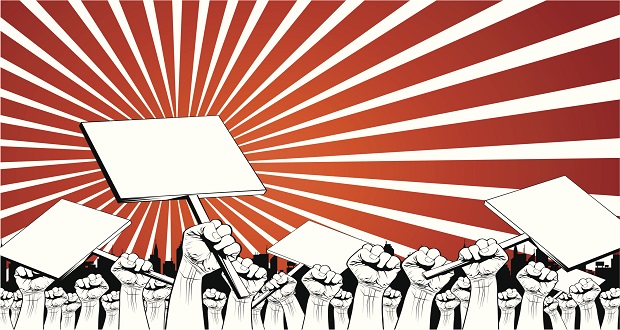
For women in the workplace, the list of non-negotiables grows longer each day. We want better pay, and better benefits, and mitigated biases, and balance — or bust. High-achieving, high-profile women throughout corporate America are shifting away from their roles in unprecedented numbers to find what they are seeking. According to a 2022 report by McKinsey & Company and LeanIn.org, for every woman at the director level who gets promoted, two female directors are choosing to leave their company. This trend will have lasting consequences for corporations, their culture, and the trust placed in their leadership. It is also a direct reflection of the progress afforded to, and earned by, women in the workplace. So, why this “Great Breakup” now? As a diversity, equity, and inclusion advisor, I’ve spent a fair amount of time answering that very question.
For many women, the compounding effects of the pandemic highlighted their desire for wholeness and harmony — meaning that addressing their non-negotiables in part is insufficient. Meanwhile, trust in leaders’ promises to close the gender gap continues to wane. Previous Edelman Trust Barometer reports found that, overall, women are less trusting of their employers than men, though that gap closes with increased engagement and information. The 2022 report noted nearly 6 in 10 employees say that their default tendency is to distrust until they see evidence of trustworthiness, and those same respondents believe businesses, moreso than government or nonprofits, must lead in breaking the cycle of distrust.
IBM launched its women in leadership study in 2019 to determine if the attention and resources devoted to aiding women’s advancement had made a demonstrable difference in closing the gender gap. Updated in 2021, their study found that “the number of women serving in senior leadership positions has barely budged over the past 2 years. Only 1 in 4 organizations are making the advancement of women a top 10 priority. And, perhaps most concerning, there are now fewer women in the pipeline to fill executive roles than there were in 2019.”
Women are tired of waiting for equity, and where they do not get it, they leave to find or create it. New findings from International Workplace Group, note more than 70 percent of women say they will walk away from their jobs, regardless of other benefits, if the flexibility of working hybrid is off the table. Of those, nearly 90 percent believe that the flexibility to choose how they work is an equalizer in the workplace, and 66 percent believe that hybrid working allows them to experience fewer biases due to gender, race, or other aspects of identity.
As women, the many dimensions of our identity are necessary and cannot be parsed out from the reality of what it means to be a woman, whether on the job or in society. To that point, a survey of U.S. employers found that women of historically excluded identities had the highest share of unmet basic needs, with those same respondents noting worse mental and emotional health outcomes, due in no small part to the toll of underlying biases that women in the workplace experience.
The American corporation is an objectively biased system built for and in service to men. That being the case, why should we stay? If the workplace were built for women, not only would autonomy of choice for ways of working (be it hybrid, remote, or in office) be a priority, but we would be paid dollar for dollar with our male counterparts, we would not have to endure grumbling at the necessity of having to provide a (usually makeshift) mothers’ room, we would have in-office child care or subsidies, and we would offer copious amounts of paid caregiver leave — just to mention a few grievances.
Some biases are more obvious than others. For example, I wonder if our counterparts ever refer to themselves as “men in the workplace”? After all, why would that type of specificity be necessary when the workplace system considers you the default? My experience leads me to believe that they do not — at least not consciously and constantly like women must. And, in fact, there is data to prove it. Studies show that women are about twice as likely as men (42 percent versus 22 percent) to have experienced some form of gender discrimination at work. Also, research tells us that the impact of such biases affects women far more than men.
When I engage corporate clients in diversity, equity, and inclusion programs, the eight most common biases I see are:
- Hierarchy bias: Deference to hierarchy or the highest-paid person in the room, and minimizing the voices of people more junior in any given situation.
- Prestige bias: Preference for particular schools, institutions, or experiences, and a premium value on access to elite opportunities.
- Conformity bias: Tendency people have to act similarly to the people around them regardless of personal beliefs or idiosyncrasies — aka peer pressure.
- Affinity bias: Connecting with others who share similar interests, experiences, and backgrounds.
- Ageism: To hold negative feelings about another person based on their age.
- Gender bias: Preference of one gender over another.
- Confirmation bias: Seeking out information you already believe to be true and/or drawing conclusions about a situation or person based on prejudices.
- Stereotype bias: Assuming general characteristics — good or bad — on a person, place, or experience because of one’s race/ethnicity.
Leaders must increase their awareness of the types of biases women encounter so that, when these behaviors show up, they are better equipped to appropriately identify and call them out. When our biases manifest as explicit behaviors, they become harmful microaggressions. One way to combat this is with the use of microaffirmations — positive actions and gestures that make people feel valued and included. This can look like:
Recognizing and Validating Experiences
Everyday experiences of bias and microaggressions can feel like death by a thousand cuts. The act of recognizing and validating these experiences as real and harmful is an important step to disrupting them and their impacts. It also signals to those on the receiving end of these behaviors that you are an ally and leader who will take action and commit to inclusion.
Affirming Emotional Responses
Unmitigated negative attitudes toward women solely because they are not men are unjustified and can be emotionally taxing. Your affirmation of women’s responses to bias signals that you are listening to learn, seeking to understand, and honoring their truth.
Practicing Active Listening
Active listening means working to understand what women are saying, reflecting on and responding to what’s being said, and retaining the information so that, as a leader, you are able to take effective action(s). Responding thoughtfully requires building a connection, developing trust, and identifying specific challenges women in the workplace encounter. Despite popular belief, active listening is more than a leadership soft skill, it is a powerful and underrated relational tool that aids us in creating safe spaces for inclusion.
These tangible expressions of solidarity might seem small — I can assure you they are anything but. The biases and barriers we experience as women can feel like heavy rain beating down on a weathered roof, waiting to break. Each of us plays a vital part in transforming the narrative and, more importantly, reimagining antiquated systems that define the role of women in the workplace and society. At the heart of this is a shift in perspective from “we want to include you at this table” to “we built this table with you in mind.” As women, we are socialized to smile, suffer silently, and sit pretty. This reality may be the status quo that we’ve known, but it is informing our response moving forward — and reshaping the corporate landscape as we go.


















